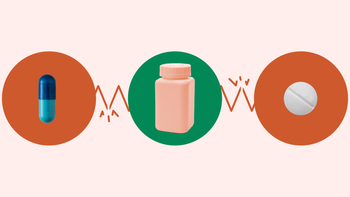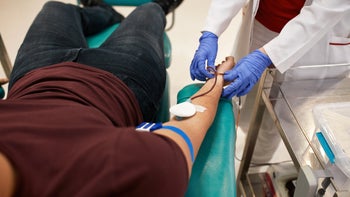
Enlarged Spleen (Splenomegaly): Causes and Complications
Key takeaways:
Splenomegaly means that the spleen — an organ in the upper left part of the abdomen — is enlarged.
Splenomegaly isn’t a disease. Rather, it’s a symptom that occurs in response to another health condition.
If the spleen is too big, it’s important to figure out why. Treatment of splenomegaly depends on the cause.

Splenomegaly means the spleen is too big. The spleen is an organ that lives in the upper left part of the abdomen, just beneath the rib cage. It’s normally about the size of a fist, but its size varies depending on a person’s age, height, weight, and sex at birth. Larger people have larger spleens.
Splenomegaly isn’t a disease in and of itself. Rather, it’s a symptom of an underlying health condition. So if the spleen is too big, it’s important to find out why. This will help prevent complications and find the right treatment.
What does the spleen do?
You might think of the spleen like a really useful garbage disposal. It filters the blood, removing old and damaged blood cells the body no longer needs. It’s also part of the immune system, which protects you against germs and other foreign invaders. The spleen helps filter out germs, and it can even make some antibodies.
What causes splenomegaly?
Splenomegaly has many different causes, which fall into four different buckets:
Too much blood pooling in the spleen: Severe liver disease (cirrhosis), heart failure, and clots in the nearby veins can cause a backup of blood into the spleen. This backup causes the spleen to swell.
Buildup of stuff that doesn’t belong in the spleen: For example, amyloidosis causes a buildup of abnormal proteins in the spleen. Blood cancers (like lymphoma and leukemia) cause a buildup of cancerous cells in the spleen.
Buildup of blood cells in the spleen: Blood cell disorders (like sickle cell disease and immune thrombocytopenia) clog up the spleen with more damaged blood cells than it can handle, causing it to enlarge.
Increased immune system activity in the spleen: Infections like mononucleosis (“mono”) get the immune system’s attention, rallying the troops to fight off intruders (germs). Since the spleen is part of the immune system, infections make it work over time, causing the spleen to get bigger.
What are the signs and symptoms of splenomegaly?
Many people with splenomegaly don’t have symptoms. When symptoms do occur, they might include:
Mild discomfort in the left upper abdomen and/or left shoulder
Decreased appetite, or getting full faster than usual
Bloating
Easy bleeding or bruising
Read more like this
Explore these related articles, suggested for readers like you.
Other symptoms have more to do with the underlying cause of splenomegaly, not the enlarged spleen itself. For example:
Weight loss, night sweats, and/or fatigue — if splenomegaly is due to cancer
Fevers or generally feeling unwell — if splenomegaly is due to infection
Low blood counts — if splenomegaly is due to a blood cell disorder
How do you diagnose splenomegaly?
Splenomegaly diagnosis can occur when your healthcare provider is looking for a cause of some of the symptoms above. If the spleen is large enough, they might be able to feel it on a physical exam.
A normal-sized spleen typically can’t be felt on a physical exam, though children and very thin adults are exceptions. Imaging tests — like ultrasound, CT, or MRI — are needed to confirm splenomegaly.
But, if there are no symptoms, splenomegaly may be detected by accident. This can happen if you have an imaging test for another reason.
How do you treat splenomegaly?
Treatment of splenomegaly depends on the cause. That means treatment isn’t directed at the enlarged spleen itself, but at whatever caused it. For example, for splenomegaly due to fluid backup from heart failure, treatment would target the heart failure. If the cause is a blood cell disorder, treat the blood cell disorder.
The spleen often returns to normal size after the underlying cause of splenomegaly is treated.
Rarely, the spleen or part of the spleen may need to be removed in a splenectomy. This procedure is typically reserved for situations in which the spleen has been severely injured (like in a car accident) or when splenomegaly is causing dangerously low blood counts.
It’s possible to live without a spleen, but the risk of infection is higher. People who don’t have spleens receive vaccinations to decrease infection risk.
Is splenomegaly dangerous?
Sometimes. When the spleen is very enlarged, it may burst or bleed, especially if bumped too hard. This may be life-threatening. So it’s wise to avoid contact sports if you have splenomegaly until the spleen returns to normal size.
Splenomegaly may also cause low levels of blood cells. The spleen normally removes old or damaged blood cells. But when the spleen is too big, it can’t do this as well. This causes blood cell numbers to drop (hypersplenism). There are risks of having low blood cell numbers:
Too few white blood cells can increase the risk of infection.
Too few red blood cells can cause fatigue, shortness of breath, and many other symptoms.
Too few platelets can cause bleeding.
The bottom line
Splenomegaly means that the spleen is too big, and a spleen that’s too big isn’t normal. If the spleen is enlarged, it’s important to figure out why. Testing is often needed to find the cause. Together with your healthcare provider, you'll get to the bottom of things to keep you as healthy as possible.
Why trust our experts?


References
American Society of Hematology. (n.d.). Blood cancers.
Centers for Disease Control and Prevention. (2016). Asplenia.
Chapman, J., et al. (2022). Splenomegaly. StatPearls.
Coffey, W., et al. (2022). Spleen imaging. StatPearls.
Johns Hopkins Medicine. (n.d.). The immune system.
Johns Hopkins Medicine. (n.d.). Sickle cell disease.
Johns Hopkins Medicine. (n.d.). Splenectomy.
University of Rochester Medical Center. (n.d.). Overview of blood and blood components.
Yunfu, L., et al. (2016). Hypersplenism: History and current status. Experimental and Therapeutic Medicine.





























